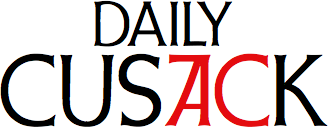About Daily Cusack
Blogs
- Rorate Caeli
- First Things blog
- Sancrucensis
- Ex Laodicea
- Millinerd
- American Conservative blogs
- Spoils of Egypt
- Sam Kriss
- Paraphasic
- Eunomia
- Irish Aesthete
- Classicist
News
- BBC News
- Daily Telegraph
- Spectator
- Catholic Herald
- First Things
- American Conservative
- New Criterion
- London Review of Books
- Frankfurter Allgemeine
- Neue Zurcher Zeitung
- ConservativeHome
- CapX
- Arts & Letters Daily
- Buenos Aires Herald

Staatspresident Jacobus Johannes Fouché giving the staatsrede from the throne of the Senate within the Houses of Parliament in Cape Town.
What is now the State of the Nation Address has its origins in the speech from the throne (in Afrikaans staatsrede meaning “state reasoning/rationale”) setting out the Government’s legislative programme for the year. The high point of the State Opening of Parliament, it was originally given by the Governor-General (or, in 1947, by the King of South Africa himself) but with the abolition of the monarchy in 1961 the sovereign’s vice-regal representative was abolished and replaced by the Staatspresident as chief officer of the South African state.
Giving a speech from an actual throne was considered too monarchic for a republican polity, so – like in the Boer republics of old – presidents gave their staatsredes standing. Here, State-President Fouché is flanked by the chiefs of the defence staff and police, the Serjeant-at-Arms with the mace, and the Gentleman Usher of the Black Rod.
Of course, much of this was abolished in the 1980s with the constitutional innovations as a last-ditch attempt to entrench apartheid. South Africa is now on its third constitution since the above photo was taken.
It reminds me of how in Ireland almost all the traditions of the Viceroy (viz. the Viceregal Guard of Battleaxes, etc.) were abolished not by the Saorstát or Éire but by the British themselves – in their case by penny-pinching Victorians who found Dublin an easy target for cost-cutting.


27 Jan 2016 5:03 pm
In Dutch, “rede” is indeed reasoning, but it also simply means speech. I can only presume the same is true for Afrikaans.
27 Jan 2016 5:05 pm
Indeed, the Dutch speech from the throne is known as “de troonrede”.
27 Jan 2016 5:13 pm
I’ve seen the throne speeches of many African countries being given from what is otherwise the speaker’s chair, but I can’t tell from the photo what Fouché is standing in front of. Is it the Senate President’s chair or the former viceregal throne?
27 Jan 2016 6:00 pm
It is indeed the chair of the President of the Senate, which was also employed as a throne during viceregal or royal visits.
This interior set-up was demolished when the chamber was redesigned to house the National Council of Provinces.
28 Jan 2016 10:51 am
Strange, that’s not what I see in the 1947 picture; the King and Queen are seated on thrones clearly quite different from the President’s chair.
28 Jan 2016 11:25 am
Oh yes — having actually looked at the picture, you’re quite right. I don’t know where those thrones came from. The president’s chair looks the same as when the chamber was home to the Legislative Council of the Cape Colony.
As for the lower house, when the Herbert Baker wing was built, the original Speaker’s chair from the Cape Parliament was used in the government caucus room, and the second speaker’s chair (also pre-1910) was moved to the Baker chamber, where it remains today.